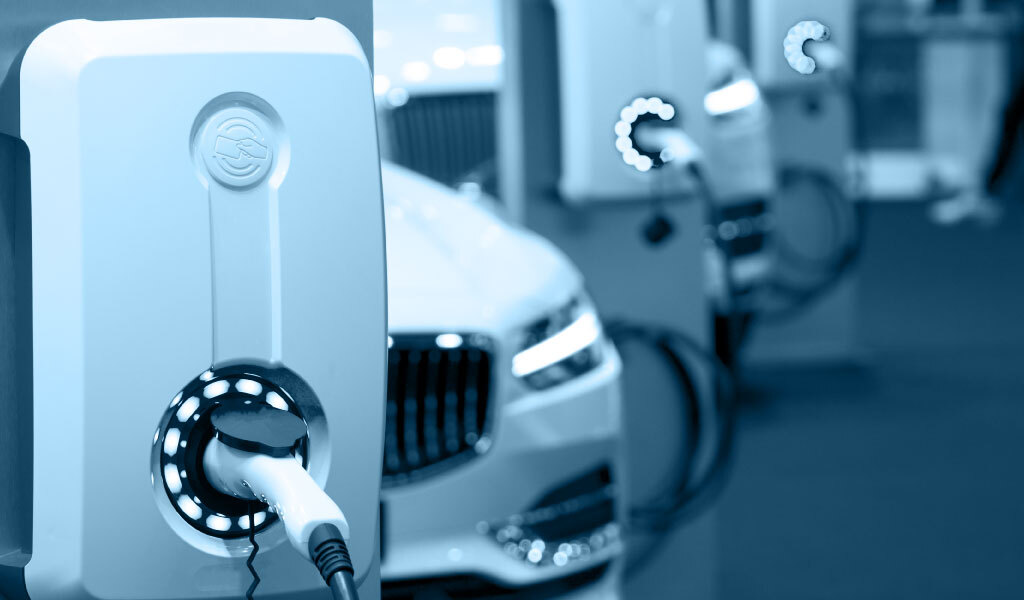
Everything you need to know about electric car charging stations
While it is true that, for many, electric mobility is the future, neither the mobility infrastructure nor drivers are currently prepared for this new scenario. The cost and difficulties to implement the corresponding electric car charging stations in Spain are still very low.
Factors to take into account when installing a charging point in a private garage
The first thing to take into account is the minimum requirements to carry out an installation. When buying an electric vehicle or plug-in hybrid, the needs of these vehicles must be taken into account, since in order to charge these cars it is necessary to have a private or communal garage where the charging point can be installed.
Type of vehicle to be charged
The necessary infrastructure will depend, to a large extent, on the type of sustainable vehicle purchased. We distinguish:
Hybrid vehicle
If we opt for a rechargeable hybrid vehicle, the ideal would be to have at least 4.6 kW of power at home. This is partly because the batteries of plug-in hybrids are smaller than those of pure electric vehicles. This charging capacity is sufficient to charge them to their full capacity in a few hours.
If there is less than 3.4 kW in the electrical installation, it will be more difficult to carry out other tasks in the home, such as cooking or running the washing machine, as there would be very little power available for other uses. In addition, the charging time will be longer.
It should be borne in mind that most electrified car chargers prioritise the delivery of electricity to the home, leaving the surplus for the car.
Electric vehicle
On the other hand, a fully electric vehicle needs a charging power of at least 7 kW. Charging a pure electric vehicle with batteries of 50, 70 or more kW/hour at a normal socket could take more than 20 hours to charge, provided no other electrical device is being used at the same time.
Charging a pure electric vehicle with 50, 70 or more kW/hour batteries in a normal socket could take more than 20 hours to charge.
It is true that the battery is not charged to 100% every day, but having 4.6 kW power could be a problem if the car needs to be charged for an unforeseen event and would mean charging at peak times.
Electrical power required
It is very important to know the domestic electrical power. In a normal home, the electrical power is usually around 4.6 kW. By the term “normal home” we mean a home in which a family can carry out its daily tasks normally.
In other words, several devices can be plugged in at the same time during daily use without a drop in voltage or loss of electricity supply.
It is possible to recharge the vehicle in other establishments. For example, in those where the electrical power is higher (usually more common in businesses or shopping centres and very rare in homes). In work buildings, the voltage ranges from 8 kW to 11 kW.
The cost of charging an electric vehicle
It is a key factor to take into account the electrical power of each location, the cost of charging the vehicle and the type of installation that can be installed in that location.
To find out how many kilowatts of power you have in your home, you can check your bills or call the electricity company you have a contract with.
Increasing the power of a house or room is not easy. It requires a prior review by the electricity company to analyse the corresponding installation.
It may be that the electrical installation does not exceed the necessary increase in power and requires a reform due to its age, changes in regulations and many other reasons.
In addition to the obvious costs involved in changing the electrical installation, increasing the power output means an increase in electricity costs month by month.
So where do you charge your electric car if you don’t have a garage with a socket?
Problems with external infrastructures
Another drawback of electric car charging points lies in the external infrastructure, where they are certainly most needed to allow drivers to travel long distances without any problems.
The biggest problem with the installation of electric car charging points is the high cost of bringing the necessary electrical power to a petrol station. In addition, there is currently little profitability with this type of infrastructure if one includes the actual consumption and the price of the installation.
A fast charging point at a public terminal in Spain is a 50 kW charge and costs 4000 euros per year. Adding the costs of installation and infrastructure consumption would result in an exorbitant and unaffordable bill for any service station.
In order for a user to purchase an electric car, he or she needs a network of charging infrastructures at home, at work or in the city. Because it would severely limit the mobility of the vehicle if charging points are not guaranteed.
It is not profitable to install charging points in Spain.
The demand of the Spanish population does not yet require charging points for electric cars because the Spanish car fleet is very old, and therefore most of them are combustion cars.
Furthermore, Endesa’s director of electric mobility, Elena Bernárdez, says that the government’s targets for 2030 with the Moves III plan are very ambitious as there are many problems in installing the necessary public infrastructures.
As we have said before, the electric vehicle fleet in Spain is very small and there is still a long way to go to achieve a developed automotive sector.
The cost of charging points is unaffordable without adequate demand.
In addition, the cost of higher power infrastructures is very high, not only because of the initial investment, but also because of the cost of the fixed power term. This fixed term has to be paid invariably, regardless of whether or not the recharging point is used.
On the other hand, Bernárdez suggests that electrical installation does not depend solely on companies, but that the administrative procedures of public institutions should be streamlined. He assures that “these procedures can take months or years”.
In order to be able to invest in electric cars, the most important thing is to facilitate the use of public access charging points for users who wish to drive such a vehicle, because then it will not be impossible to renew the Spanish car fleet.




